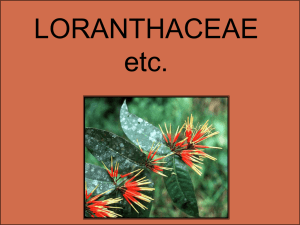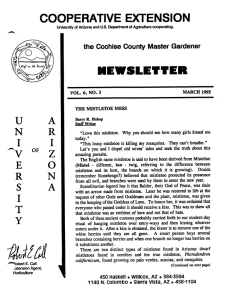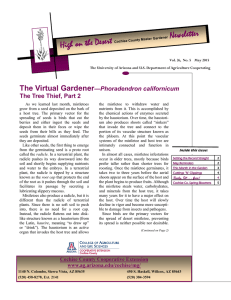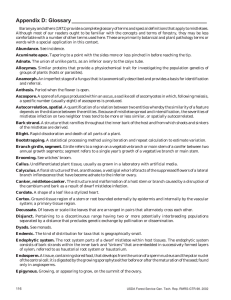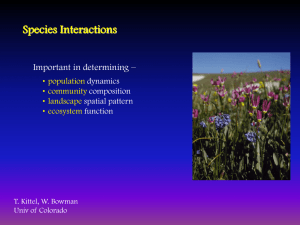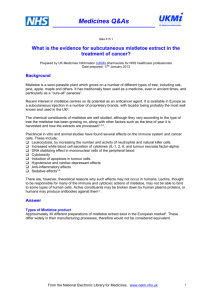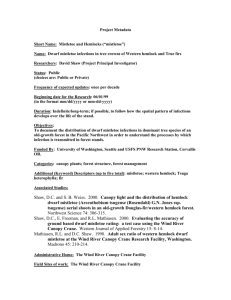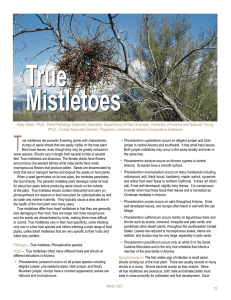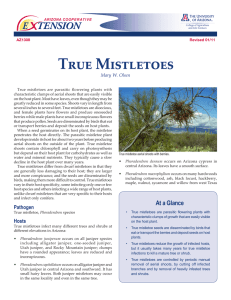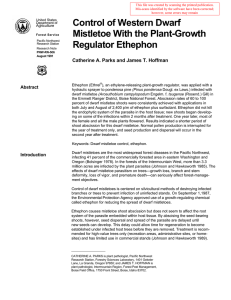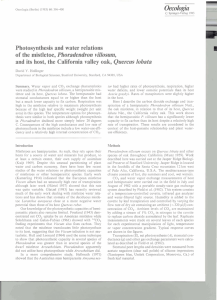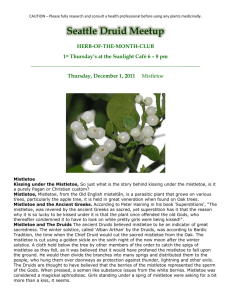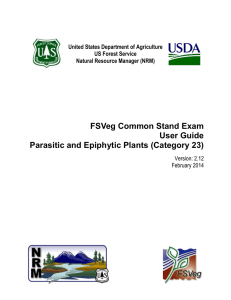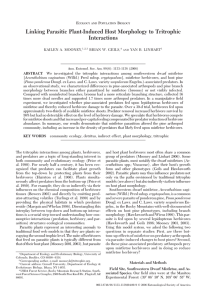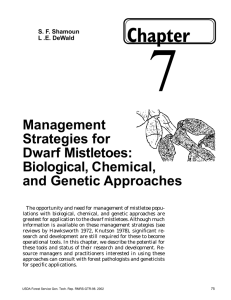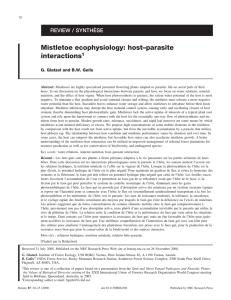IS MISTLETOE HARMFUL TO LIVESTOCK?
advertisement
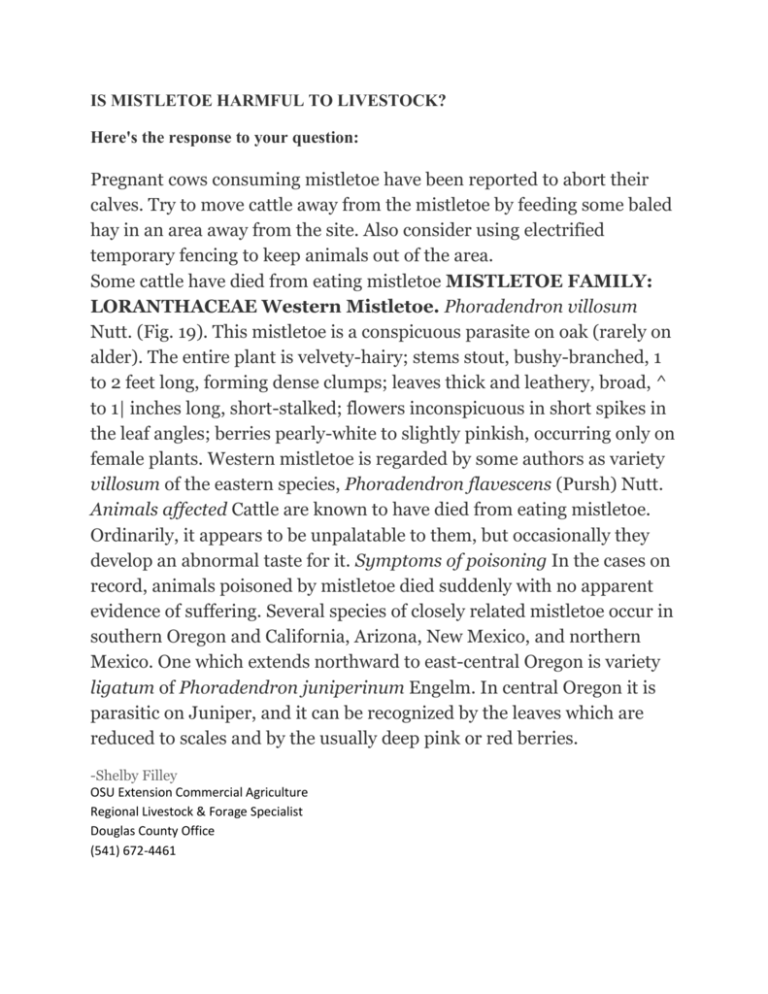
IS MISTLETOE HARMFUL TO LIVESTOCK? Here's the response to your question: Pregnant cows consuming mistletoe have been reported to abort their calves. Try to move cattle away from the mistletoe by feeding some baled hay in an area away from the site. Also consider using electrified temporary fencing to keep animals out of the area. Some cattle have died from eating mistletoe MISTLETOE FAMILY: LORANTHACEAE Western Mistletoe. Phoradendron villosum Nutt. (Fig. 19). This mistletoe is a conspicuous parasite on oak (rarely on alder). The entire plant is velvety-hairy; stems stout, bushy-branched, 1 to 2 feet long, forming dense clumps; leaves thick and leathery, broad, ^ to 1| inches long, short-stalked; flowers inconspicuous in short spikes in the leaf angles; berries pearly-white to slightly pinkish, occurring only on female plants. Western mistletoe is regarded by some authors as variety villosum of the eastern species, Phoradendron flavescens (Pursh) Nutt. Animals affected Cattle are known to have died from eating mistletoe. Ordinarily, it appears to be unpalatable to them, but occasionally they develop an abnormal taste for it. Symptoms of poisoning In the cases on record, animals poisoned by mistletoe died suddenly with no apparent evidence of suffering. Several species of closely related mistletoe occur in southern Oregon and California, Arizona, New Mexico, and northern Mexico. One which extends northward to east-central Oregon is variety ligatum of Phoradendron juniperinum Engelm. In central Oregon it is parasitic on Juniper, and it can be recognized by the leaves which are reduced to scales and by the usually deep pink or red berries. -Shelby Filley OSU Extension Commercial Agriculture Regional Livestock & Forage Specialist Douglas County Office (541) 672-4461
